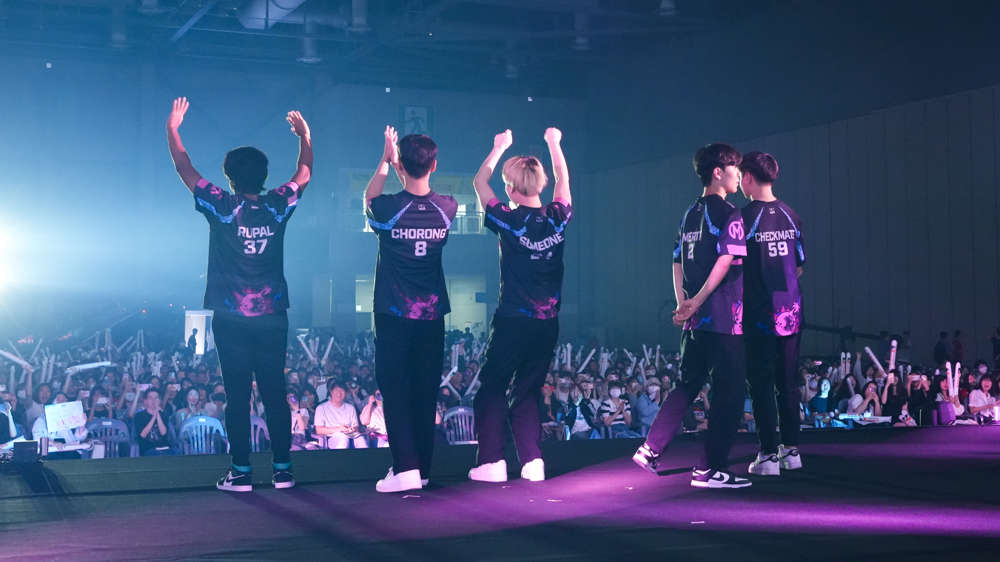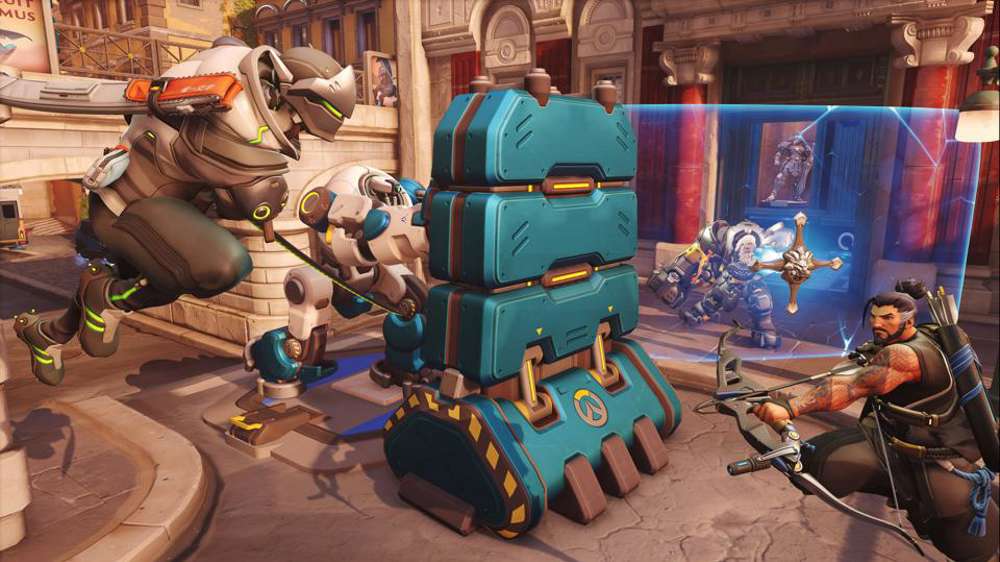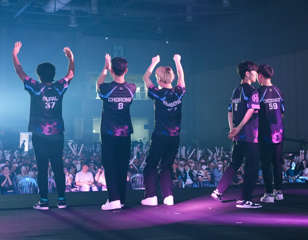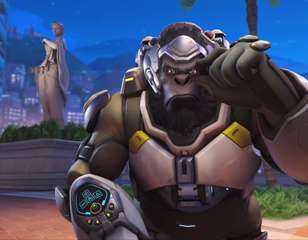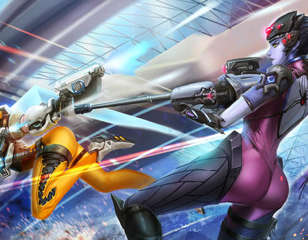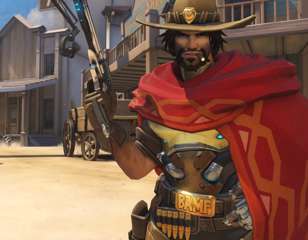Has GOATS returned and should Summer Showdown be concerned?
Is Overwatch League walking into GOATS 2.0 or are we tilting at windmills?

Joseph "Volamel" Franco
02nd Aug 2022 14:00
Images via Blizzard Entertainment

To say that the 2019 Overwatch League season was polarising would be the understatement of the year. The "GOATS" compositions, named after the amateur team that pioneered it, took the year by storm and created a rigid landscape where you lived or died by how good you were at that set of six Overwatch heroes. Be it the lack of DPS, the heavy reliance on teamwork, the difficulty in viewing from a casual standpoint, 2019's GOATS meta was earthshattering for competitive Overwatch. So much so that the Overwatch community has been concerned with the recent beta patch and its possible re-emergence. So, should fans of the Overwatch League be concerned? Has GOATS returned? And what do we mean when we say "GOATS"?
The spectre of GOATS

If you've been in and around Overwatch for more than a couple of minutes, you end up hearing about GOATS and everyone's opinions on the matter. The ensuing conversation ends up feeling eerily similar to your family attempting to probe for political leanings at the dinner table. Some folks loved it, others despised it, and there are a few who just miss the players that carried the banner.
No one is wrong, but everyone will claim otherwise.
One thing we all can agree on is the objective history of the matter. An amateur team named GOATS popularises a triple tank and triple support composition and it takes the world by storm. Activision Blizzard tried to stop it, but they failed and had to implement Role Lock prior to the 2019 season's fourth stage to cap the style at the knees.
However, one thing that is inarguable is the lasting impact GOATS has had on the competitive Overwatch community's psyche.
After GOATS we "Winston GOATS", obviously centred around Winston instead of Reinhardt, then we had "SNOATS" which featured Mei over a D.Va, and then we had "OATS" which was just Orisa GOATS. This naming convention began to blur the original concept and the definitive answer to what GOATS was quickly become incredibly malleable.
So much so that its loose form has begun to become a catch-all term for a collection of traits that you have to crack out the yoga mat to see the common thread. Talking about GOATS in the modern age of Overwatch usual becomes conversation like when you and your friends boil down all food to sandwiches and soups.
Fettuccine alfredo and cereal become soups while pizza and a ribeye steak are sandwiches. Don't ask us, we didn't make the rules.
If we created a criminal lineup of different Overwatch compositions that were styled to be played very close together, have low range, and whose gameplay loop consisted of running headlong into the enemy, we'd wager nine out of ten Overwatch League fans would ask if they were all like GOATS.
Was Dallas Fuel's Lucio/Moira composition from 2021 GOATS?
Is the London Spitfire's Reinhardt-based style like GOATS?
Is cereal just a cold soup?
Is a pizza just an open-faced sandwich?
With this amorphous mass, this definitionless construct, you're left wondering; if everything is GOATS, is anything GOATS?
Windmills and echoes

So, what even is "GOATS"?
For this discussion, it's our opinion that GOATS was a deathball composition, whose focus was to leverage its high sustainability to force objective pressure and transition that pressure into disadvantageous positioning for the enemy.
GOATS also housed an incredibly strong ultimate engine, meaning that many of the ultimates expended during team fight resulted in opportunities for other heroes of the composition to build their ultimates. In turn, this results in a composition that, with a low ease of execution comparatively, captures the map and compounds in strength at a blistering pace.
To put it simply, GOATS was both "the immovable object" and "the unstoppable force" all sealed in a tidy little microwave-safe container, ready to consume at a moment's notice.
Another fixture to how GOATS operated was how it engaged its team fights. Without getting into the weeds of theoretical playstyles and their counters, GOATS is your quintessential "rush" composition. It takes all of its heroes and push them straight up the middle in one blitz from the line.
The composition was so good that the only way professional teams felt they could battle it was to match it and play it themselves. It was that rigid mindset that made Overwatch face its own music and change its identity once again.
This brings us to our current question.
Overwatch's amateur division, Overwatch Contenders, has been playing on a recent beta patch for Overwatch 2. A specific composition has caught the attention of fans and professional players alike due to how often it is played. It includes the game's newest hero, Junker Queen, paired alongside Lucio, Birgitte, Sojourn and a second DPS hero of the team's choice, but more often than not it's Genji.
Following the former naming convention, this composition has lovingly earned the name "Junker GOATS".
Queue up the San Andreas memes, because here we go again.
Has GOATS returned?
No.
God, no.
Please, come out from under your bed, it's okay.
We're sure you're thirsty. Here, have a Capri Sun and some orange slices.
GOATS has been dead for years, the boogeyman can't get you here.
Jokes aside and to be trite for a moment, GOATS specifically featured three supports and tanks, so we physically can't replicate it anymore. Role Lock limited us to two of any given role and Overwatch 2 further filed away at that by removing a tank from the board. And yet we, the community, still find GOATS in some comically bad flashback sequence from a B-rate soap opera.
GOATS is dead and gone and with Overwatch 2's single tank roster, we wonder if anything of the sort could return. Something so defensively strong, with so much sustainability, that you could break the game down and remove the FPS elements to it.
So what is it that we are really seeing?

Let's play compositional whack-a-mole for a moment.
Are we seeing a low-range composition?
Yes and no. Sojourn is a fairly high-range hero and can create picks from fairly far away, on top of that Junker Queen's Jagged Blade gives her a way to play from range, while wielding a shotgun. Paired with that, depending on what your second DPS is, you could have some serious range to your composition.
Are we seeing something with particularly high sustainability?
No. Lucio is primarily here for his speed boost while Brigitte is a nice "catch-all" support that can throw Armor Packs to Genji or your second DPS of choice and Sojourn as they play the wings all the while keeping Inspire up by wailing on the enemy tank.
Is this a rush-style composition like GOATS?
From what we can see from Overwatch Contenders, teams default to a poke-oriented play style more often than not, playing for picks from the Sojourn and Junker Queen with the occasional Genji assassination. That said, this is a composition that has different modes to it, so while it could look very slow one minute, one Amp It Up and Commanding Shout later and things look like rush.
So while it's clear by our admittedly subjective definition, that this new Junker Queen composition isn't some terrible GOATS sequel, the community still feels like this is GOATS and that the world is ending and that everything is on fire, oh my god please help.
That said, we do have one very large thread that binds these two ideas together - rigidity.
The one thing we saw between 2019 and now in Overwatch Contenders is a high volume of the same core heroes on every game mode and on every map.
If the GOATS era taught us one thing is that the Overwatch community enjoys fluidity and seeing the colourful cast that Activision Blizzard has created. The issue here is that era of Overwatch was so poignant that the core issue was glossed over.
We wager that most people didn't hate GOATS so much as they hated how rigid things were.
And even if you agree with that hypothetical scenario, we still would calm any concerns when it comes to August 11th and the start of the Summer Showdown.
How are we sure?
One thing to keep in mind is that Overwatch Contenders A-Sides has been played on the latter Overwatch 2 beta patch. The patch that Overwatch League's Summer Showdown will be played on will be the patch where Junker Queen's Commanding Shout is heavily toned back. Ignoring the many other changes, gutting Commanding Shout is enough to shift the perspective of Junker Queen and that could unwrite everything Contenders has written.
Speaking of, Overwatch Contenders is already dabbling in their own iterations as well. In North America, Odyssey had their time in the sun and broke out a Pharah as their second DPS and leaning into this poke style of play. In Korea, Team Diamond had their own Pharah look as well on Circuit Royal. Even Europe, in its entirety, is doing their own thing as well.
Bits here and there are rigid, but when cracks are already beginning to show, once we push this to the highest level, you have to wonder what else sprouts from these ideas. Being concerned with the incoming meta is fair and fine, but when we face reality, we end up watching our neighbours tilting at windmills. There are ways out. GOATS is dead. We might not like rigidity but
If you're concerned at all about the 2022 Overwatch League season walking into GOATS 2.0, we're here to tell you everything is going to be fine. Not only does this new Junker Queen composition not play anything like the old GOATS composition, but it might also even be dead on arrival with the new beta patch rolling out ahead of the Summer Showdown.
There could be a sense of rigidity from Overwatch League team's using its amateur scene as a diving board but that also is viewing the state of the game through the lens we currently have and not the one we will have with this new patch. Yet, with two incredibly different spheres of influence between North America and Asia, we have plenty of opportunities for the base composition.
Rigidity doesn't mean GOATS, cereal isn't soup, and Summer Showdown will likely be fine.

About The Author
Joseph "Volamel" Franco
Joseph “Volamel” Franco is a Freelance Journalist at GGRecon. Starting with the Major League Gaming events 2006, he started out primarily following Starcraft 2, Halo 3, and Super Smash Bros. Melee, before transitioning from viewer to journalist. Volamel has covered Overwatch for four years and has ventured into VALORANT as the game continues to grow. His work can also be found on sites like Esports Heaven, HTC Esports, and VP Esports.
